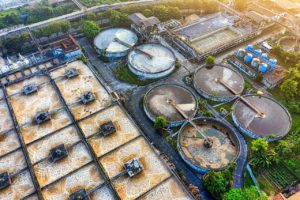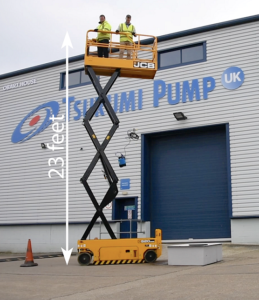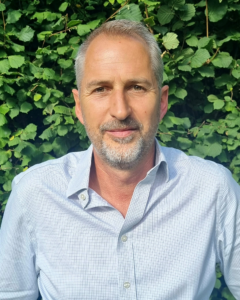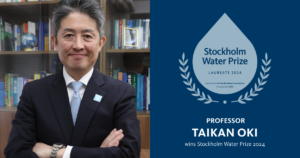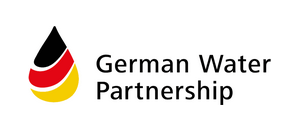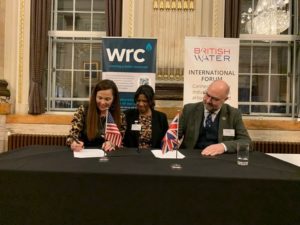Starch Producer Sets World Environmental Benchmark Transforming Waste into Green Energy
Global Water Engineering has teamed up with an innovative starch producer in Asia to show the world just what can be achieved by adopting advanced technology to reduce pollution, save power and enhance profitability at the same time.
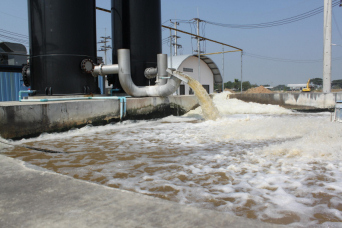
Global Water Engineering has partnered Chokyuenyong Industrial in Thailand to cut effluent COD pollution levels at its cassava production plant by more than 95 per cent while extracting gas from its wastewater to power its boilers and generate electricity for its own use and to sell back to the provincial grid.
Processing 1200 tons of cassava roots a day, Chockyuenyong Industrial, headed by Tawatchai Yuenyong, has shown what it takes to become a leading international industrial citizen and good local neighbor to surrounding homes and businesses by using GWE anaerobic technology supplied by local GWE agent Retech Energy with a capacity of 3,200 m3 effluent a day. The installation provides an international model of how it is possible to attain top environmental standards of wastewater cleanliness while generating green power and carbon credit profits as well, says GWE CEO Mr Jean Pierre Ombregt, whose company has completed more than 300 water and waste water projects in more than 60 countries including Asia, Africa, North and South America, Australia, China, Europe (including Eastern Europe) and Russia. GWE has successfully built and commissioned more than 75 biogas utilisation systems for clients worldwide.
Commissioned and refined over the past three years, the Chockyuenyong installation:
- Cut the Chemical Oxygen Demand (COD) pollution level of influent wastewater from 22,500 ml/l (14,525mg/l Biochemical Oxygen Demand, BOD O2) to less than 1125 mg/l, resulting substantially cleaner discharges to treatment ponds and ultimately the environment (and in the process dramatically reduced odour from typical ponds)
- Returns up to 2.7 Mw of electricity a year to a provincial power grid, PEA, which serves some areas distant from major generating sources and welcomes fresh input of green power generated locally
- Saves the equivalent of up to 21,000 litres a day of fuel oil by producing up to 34,000 Nm3 of bio gas, which is used to power the boilers and heating equipment used extensively in cassava drying and processing and to generate electricity for the large amounts of rotating equipment used in processing
- Generates carbon credits under the United Nations’ Framework Convention on Climate Change, through which it earns valuable internationally tradeable CER certificates, representing the right to emit one tonne of carbon dioxide or carbon dioxide equivalent.
Chokyeunyong’s achievement has implications for a broad range of primary processing industries and particularly for cassava-producing countries that turn this relatively low-cost raw material into high-value starch for domestic and international markets,” says Mr Ombregt.
“The UN’s Food and Agriculture organisation estimates that each year, some 60 million tons of starch are extracted from a wide range of cereal, root and tuber crops for use in a staggering variety of products: as stabilizers in soups and frozen food, as coating on pills and paper, as adhesives on stamps and plywood, as a stiffening agent in textiles, as raw material for making ethanol, in non-food products, such as pharmaceuticals and thermobioplastics.and even as binder in concrete.
“Our technology applies to a broad range of these crops, including particularly the 10 per cent of world starch that comes from world cassava root production of some 200 million tons a year. The FAO says many developing countries could strengthen their rural economies - and boost cassava farmers incomes - by converting more of that relatively low-cost raw material into high-value starches.
“Thailand, as the world’s largest exporter of starch, is well placed to show leadership in how to achieve such progress in an environmentally friendly manner. Our client - with excellent guidance from Retech Energy’s team head by Managing Director Hans Westphal – has achieved results that serve as an international model of how to get the process right.”
Chokyeunyong’s process involves an equalization basin (total volume 1600m3) with submerged agitators, degasifying basin with agitator (24 m3) in-line pH adjustment, NaOH storage tank (25m3) UASB methane reactor (active volume 4800 m3) and biogas flare (standby, for use if required). The technology is all above-ground for simplicity and ease of maintenance.
GWE’s state-of-the-art anaerobic treatment significantly reduces the plant’s carbon footprint by avoiding the release of methane gas into the atmosphere.
The wastewater passes through several pre-treatment steps before entering a GWE methane reactor in which the wastewater’s organic content (COD) is digested by bacteria in a closed reactor, degrading the compounds and converting them into valuable biogas and cleaned effluent. Biogas from the process is collected and reused as renewable fuel in the plant’s thermal oil boiler, saving money that would otherwise be spent on bunker oil, which is subject to wide fluctuations in price and which, Jean-Pierre Ombregt says, can only increase in price over time. Chokyeunyong’s excess biogas is used in electrical power generation.
“Food product processing plants such as Chokyeunyong’s depend extensively on electrically powered rotating equipment, so it is very wise to have an almost infinite fuel source that provides a hedge against rising oil prices and which can also be sold back into the grid,” says Mr Ombregt.
Chokyeunyong Industrial President Tawatchai Yuenyong says his company’s investment programme has been well justified by the outcome in terms of environmental and financial results and as a good neighbor in the local community - “Our investment programme has had a very happy ending,” he says.
Not only does the plant have a highly efficient wastewater system that complies with Thailand’s strict environmental standards, but also it will continue to repay investment over many years ahead.
Results achieved at Chokyeunyong can be even further improved by converting also its solid wastes (residual pulp from the roots, after starch extraction) into biogas as well, using GWE’s RAPTOR treatment system for solid organic residues, says GWE.
Its RAPTOR technology stands for Rapid Transformation of Organic Residues. It’s a powerful liquid-state anaerobic digestion process that consists of enhanced pre-treatment followed by multi-step biological fermentation to optimize conversion of almost any organic residue or energy crop into biogas, valuable electricity or heat.
Picture: This shows the two scrubbers that are used to remove H2S(hydrogen sulphide) in the biogas before the biogas is sent to the gensets to make electricity. (Image: GWE)
Source: GLOBAL WATER & ENERGY

